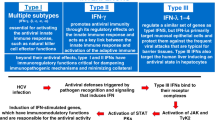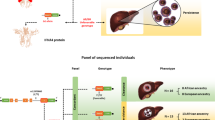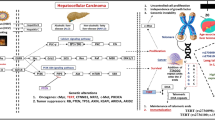Abstract
Chemokine genes may influence both hepatitis C virus (HCV) spontaneous clearance in acute infection and treatment response in chronic infection. We conducted this study to evaluate whether the genetic variants in several CC family genes influence HCV spontaneous clearance and treatment response. The current research genotyped eight SNPs, including CCR1 rs3733096, rs13096371, CCR5 rs746492, rs1800874, CCL3 rs1130371, CCL5 rs3817656, CCL8 rs1133763, CCL14 rs854625, to explore their associations with HCV spontaneous clearance and response to treatment in two populations. We identified that the CCR1 rs3733096 (dominant model: adjusted OR = 2.29, 95% CI = 1.49–3.53, additive model: adjusted OR = 2.21, 95% CI = 1.50–3.25) and CCL5 rs3817656 (dominant model: OR = 1.37, 95% CI = 1.10–1.70, additive model: OR = 1.33, 95% CI = 1.12–1.58) were associated with HCV spontaneous clearance in Chinese Han population, while we found no association with treatment response. Moreover, the expression quantitative trait loci (eQTL) analysis showed that the risk alleles of rs3817656 were significantly associated with downregulated expression of CCL5 in whole blood (P < 0.001). The polymorphism of CCR1 rs3733096 and CCL5 rs3817656 are associated with spontaneous clearance of HCV in Chinese Han population.
Similar content being viewed by others
Log in or create a free account to read this content
Gain free access to this article, as well as selected content from this journal and more on nature.com
or
References
WHO. Global hepatitis report, 2017. Geneva: WHO; 2017.
Westbrook RH, Dusheiko G. Natural history of hepatitis C. J Hepatol. 2014;61:S58–68.
Manns MP, McHutchison JG, Gordon SC, Rustgi VK, Shiffman M, Reindollar R, et al. Peginterferon alfa-2b plus ribavirin compared with interferon alfa-2b plus ribavirin for initial treatment of chronic hepatitis C: a randomised trial. Lancet. 2001;358:958–65.
Zeuzem S, Berg T, Moeller B, Hinrichsen H, Mauss S, Wedemeyer H, et al. Expert opinion on the treatment of patients with chronic hepatitis C. J Viral Hepat. 2009;16:75–90.
Thomas DL, Astemborski J, Rai RM, Anania FA, Schaeffer M, Galai N, et al. The natural history of hepatitis C virus infection: host, viral, and environmental factors. JAMA. 2000;284:450–6.
Duggal P, Thio CL, Wojcik GL, Goedert JJ, Mangia A, Latanich R, et al. Genome-wide association study of spontaneous resolution of hepatitis C virus infection: data from multiple cohorts. Ann Intern Med. 2013;158:235–45.
Gao B, Hong F, Radaeva S. Host factors and failure of interferon‐α treatment in hepatitis C virus. Hepatology. 2004;39:880–90.
Shirakawa H, Matsumoto A, Joshita S, Komatsu M, Tanaka N, Umemura T, et al. Pretreatment prediction of virological response to peginterferon plus ribavirin therapy in chronic hepatitis C patients using viral and host factors. Hepatology. 2008;48:1753–60.
Honda M, Sakai A, Yamashita T, Nakamoto Y, Mizukoshi E, Sakai Y, et al. Hepatic ISG expression is associated with genetic variation in interleukin 28B and the outcome of IFN therapy for chronic hepatitis C. Gastroenterology. 2010;139:499–509.
Thomas DL, Thio CL, Martin MP, Qi Y, Ge D, O’hUigin C, et al. Genetic variation in IL28B and spontaneous clearance of hepatitis C virus. Nature. 2009;461:798–801.
Rauch A, Kutalik Z, Descombes P, Cai T, Di Iulio J, Mueller T, et al. Genetic variation in IL28B is associated with chronic hepatitis C and treatment failure: a genome-wide association study. Gastroenterology. 2010;138:1338–45.
Tanaka Y, Nishida N, Sugiyama M, Kurosaki M, Matsuura K, Sakamoto N, et al. Genome-wide association of IL28B with response to pegylated interferon-α and ribavirin therapy for chronic hepatitis C. Nat Genet. 2009;41:1105–9.
Suppiah V, Moldovan M, Ahlenstiel G, Berg T, Weltman M, Abate ML, et al. IL28B is associated with response to chronic hepatitis C interferon-α and ribavirin therapy. Nat Genet. 2009;41:1100–4.
Prokunina-Olsson L, Muchmore B, Tang W, Pfeiffer RM, Park H, Dickensheets H, et al. A variant upstream of IFNL3 (IL28B) creating a new interferon gene IFNL4 is associated with impaired clearance of hepatitis C virus. Nat Genet. 2013;45:164–71.
Thimme R, Oldach D, Chang K-M, Steiger C, Ray SC, Chisari FV. Determinants of viral clearance and persistence during acute hepatitis C virus infection. J Exp Med. 2001;194:1395–406.
Rivino L, Messi M, Jarrossay D, Lanzavecchia A, Sallusto F, Geginat J. Chemokine receptor expression identifies pre-T helper (Th) 1, pre-Th2, and nonpolarized cells among human CD4+ central memory T cells. J Exp Med. 2004;200:725–35.
Estrabaud E, Vidaud M, Marcellin P, Asselah T. Genomics and HCV infection: progression of fibrosis and treatment response. J Hepatol. 2012;57:1110–25.
Suppiah V, Armstrong N, O’connor KS, Berg T, Weltman M, Abate M, et al. CCR5-[DELTA] 32 genotype does not improve predictive value of IL28B polymorphisms for treatment response in chronic HCV infection. Genes Immun. 2013;14:286.
Rouhou LKC, Gorgi YL, Skhiri HA, Aouadi H, Jendoubi-Ayed S, Sfar I, et al. Chemokine and chemokine receptor gene polymorphism in Tunisian hemodialysis patients with HCV infection. Arab J Nephrol Transplant. 2011;4:117–24.
Riezu-Boj J-I, Larrea E, Aldabe R, Guembe L, Casares N, Galeano E, et al. Hepatitis C virus induces the expression of CCL17 and CCL22 chemokines that attract regulatory T cells to the site of infection. J Hepatol. 2011;54:422–31.
Grünhage F, Nattermann J, Gressner OA, Wasmuth HE, Hellerbrand C, Sauerbruch T, et al. Lower copy numbers of the chemokine CCL3L1 gene in patients with chronic hepatitis C. J Hepatol. 2010;52:153–9.
Woitas RP, Ahlenstiel G, Iwan A, Rockstroh JK, Brackmann HH, Kupfer B, et al. Frequency of the HIV-protective CC chemokine receptor 5-Δ32/Δ32 genotype is increased in hepatitis C. Gastroenterology. 2002;122:1721–8.
Goulding C, Murphy A, MacDonald G, Barrett S, Crowe J, Hegarty J, et al. The CCR5-Δ32 mutation: impact on disease outcome in individuals with hepatitis C infection from a single source. Gut. 2005;54:1157–61.
Ahlenstiel G, Berg T, Woitas RP, Grünhage F, Iwan A, Heß L, et al. Effects of the CCR5-Δ32 mutation on antiviral treatment in chronic hepatitis C. J Hepatol. 2003;39:245–52.
Thanapirom K, Suksawatamnuay S, Sukeepaisarnjaroen W, Tangkijvanich P, Treeprasertsuk S, Thaimai P, et al. Association between CXCL10 and DPP4 gene polymorphisms and a complementary role for unfavorable IL28B genotype in prediction of treatment response in Thai patients with chronic hepatitis C virus infection. PLoS ONE. 2015;10:e0137365.
Lin CC, Su SH, Jeng WJ, Huang CH, Teng W, Chen WT, et al. CCL4 is the only predictor for non-responder in GT-1 CHC patients with favorable IL28B genotype when treated with Peg IFN/RBV. BMC Gastroenterol. 2017;17:169.
Marra F, Tacke F. Roles for chemokines in liver disease. Gastroenterology. 2014;147:577–94.e1.
Katsounas A, Schlaak JF, Lempicki RA. CCL5: a double-edged sword in host defense against the hepatitis C virus. Int Rev Immunol. 2011;30:366–78.
W Zimmermann H, Tacke F. Modification of chemokine pathways and immune cell infiltration as a novel therapeutic approach in liver inflammation and fibrosis. Inflamm Allergy-Drug Targets. 2011;10:509–36.
Yoong KF, Afford SC, Jones R, Aujla P, Qin S, Price K, et al. Expression and function of CXC and CC chemokines in human malignant liver tumors: a role for human monokine induced by γ‐interferon in lymphocyte recruitment to hepatocellular carcinoma. Hepatology. 1999;30:100–11.
Seki E, De Minicis S, Gwak G-Y, Kluwe J, Inokuchi S, Bursill CA, et al. CCR1 and CCR5 promote hepatic fibrosis in mice. J Clin Invest. 2009;119:1858.
Nguyen N, Esch C, Cameron B, Kumar RK, Zekry A, Lloyd AR. Positioning of leukocyte subsets in the portal and lobular compartments of hepatitis C virus‐infected liver correlates with local chemokine expression. J Gastroenterol Hepatol. 2014;29:860–9.
Han S, Sa K, Kim S, Lee S, Park Y, Lee S, et al. CCR5 gene polymorphism is a genetic risk factor for radiographic severity of rheumatoid arthritis. HLA . 2012;80:416–23.
Levine AJ, Service S, Miller EN, Reynolds SM, Singer EJ, Shapshak P, et al. Genome‐wide association study of neurocognitive impairment and dementia in HIV‐infected adults. Am J Med Genet Part B. 2012;159:669–83.
Villa C, Venturelli E, Fenoglio C, Clerici F, Marcone A, Benussi L, et al. CCL8/MCP-2 association analysis in patients with Alzheimer’s disease and frontotemporal lobar degeneration. J Neurol. 2009;256:1379–81.
Pineda-Tenor D, Berenguer J, García-Álvarez M, Guzmán-Fulgencio M, Carrero A, Aldámiz-Echevarria T, et al. Single nucleotide polymorphisms of CXCL9-11 chemokines are associated with liver fibrosis in HIV/HCV-co-infected patients. J Acquir Immune Defic Syndr. 2015;68:386–95.
Pineda-Tenor D, Berenguer J, Jiménez-Sousa MA, Guzmán-Fulgencio M, Aldámiz-Echevarria T, Carrero A, et al. CXCL9, CXCL10 and CXCL11 polymorphisms are associated with sustained virologic response in HIV/HCV-co-infected patients. J Clin Virol. 2014;61:423–9.
Acknowledgements
We would like to thank for the support of doctors and nurses from Jurong People’s Hospital for sample collection and research organization.
Funding
This study was sponsored by National Natural Science Foundation of China (Nos. 81473029, 81703273, 81502853), Natural Science Foundation of Jiangsu Province (BK20171054, 20151026), the Science and Technology Development Fund Key Project of Nanjing Medical University (2016NJMUZD012), and Priority Academic Program Development of Jiangsu Higher Education Institutions (PAPD).
Author contributions
PH, RY, and YY designed the study. YY and MY performed the experiment and wrote the draft manuscript. FZ, ML, and HF conducted the statistical analysis. XX, YF, LZ and JW provided materials and analysis tools. PH revised the manuscript. All authors accepted the final manuscript.
Author information
Authors and Affiliations
Corresponding authors
Ethics declarations
Conflict of interest
The authors declare that they have no conflict of interest.
Electronic supplementary material
Rights and permissions
About this article
Cite this article
Yao, Y., Yue, M., Zang, F. et al. Genetic variants in chemokine CC subfamily genes influence hepatitis C virus viral clearance. J Hum Genet 63, 831–839 (2018). https://doi.org/10.1038/s10038-018-0452-9
Received:
Revised:
Accepted:
Published:
Issue date:
DOI: https://doi.org/10.1038/s10038-018-0452-9



